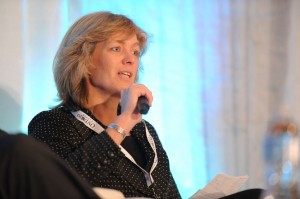
ER: In terms of strategy, what can the partnership achieve?
LS: The purpose of the MOU is to share knowledge, experience and technologies in their respective jurisdictions to enhance our capabilities to address environmental issues in their respective jurisdictions. The MOU covers water issues such as source water protection and sustainable water use, as well as several other environmental issue of interest to both jurisdictions such as climate change, waste management, clean energy, urban planning and research and development.∙
ER: So far, what results has the partnership yielded?
LS: There has been a series of meetings between the Delta Program, the Netherlands Water Partnership (NWP) and Netherlands Consul-General and Ministers and senior officials from the Ontario government, the Ontario Clean Water Agency and WaterTAP for the purposes of information sharing. Besides, representatives from the Netherlands attended Ontario’s Global Water Leadership Summit in May 2011, and Ontario representatives attended Amsterdam Water Week in November 2011. Together, Ontario and the Netherlands have conducted pilot projects in brownfield remediation and soil washing in the Kingston area. The two regions will continue to discuss new areas for potential collaboration and exchanges.
As with any legislation, Ontario looked to leading jurisdictions such as the Netherlands, Singapore and Israel in order to develop the Water Opportunities and Water Conservation Act which builds on Ontario’s expertise in water protection services and technology and will make the province a world leader in water innovation to help address global water challenges. Activities undertaken by NWP will be useful models in the design of a business plan for the Ontario Water Technologies Acceleration Project (WaterTAP). WaterTAP is a technology hub bringing together industry, academics and government to develop Ontario’s water sector and promote it globally.
ER: Of the water technologies being developed, do any explore the water/energy nexus?
LS: Water utilities use a lot of energy during the pumping, storage and treatment processes. But there is often flexibility in exactly when and how much power is needed at any given moment. ENBALA (“energy balanceâ€) smart grid technology allows water utility and power grid operators to work closely together on a second-by-second basis to manage grid demand spikes, maximize system efficiencies during off-peak times and minimize overall energy costs. Companies like Eco-Tec and Ecodyne specialize in the design of treatment systems boiler feed water and brine, and design and manufacture water treatment equipment and cooling towers for a variety of energy plants.
Elsewhere, Echologics is a leading technology company and a full solution provider in the development of acoustic technologies for the detection of leaks and pipe wall thickness in pressurized water pipes. The non-disruptive and non-invasive solution is proven to greatly reduce the energy traditionally required for leak detection.
Finally, there’s Anaergia, which develops and uses cutting-edge technologies to turn organic waste (including that from the wastewater treatment process) into biogas. It operates in a sector still in its infancy and the company is positioning itself to become the world leader. The company chose Ontario as the site for its global operations center. The $70 million facility, which is receiving $16 million from the Ontario government, will include the company’s head office, R&D and manufacturing plant.
You should follow us here.





